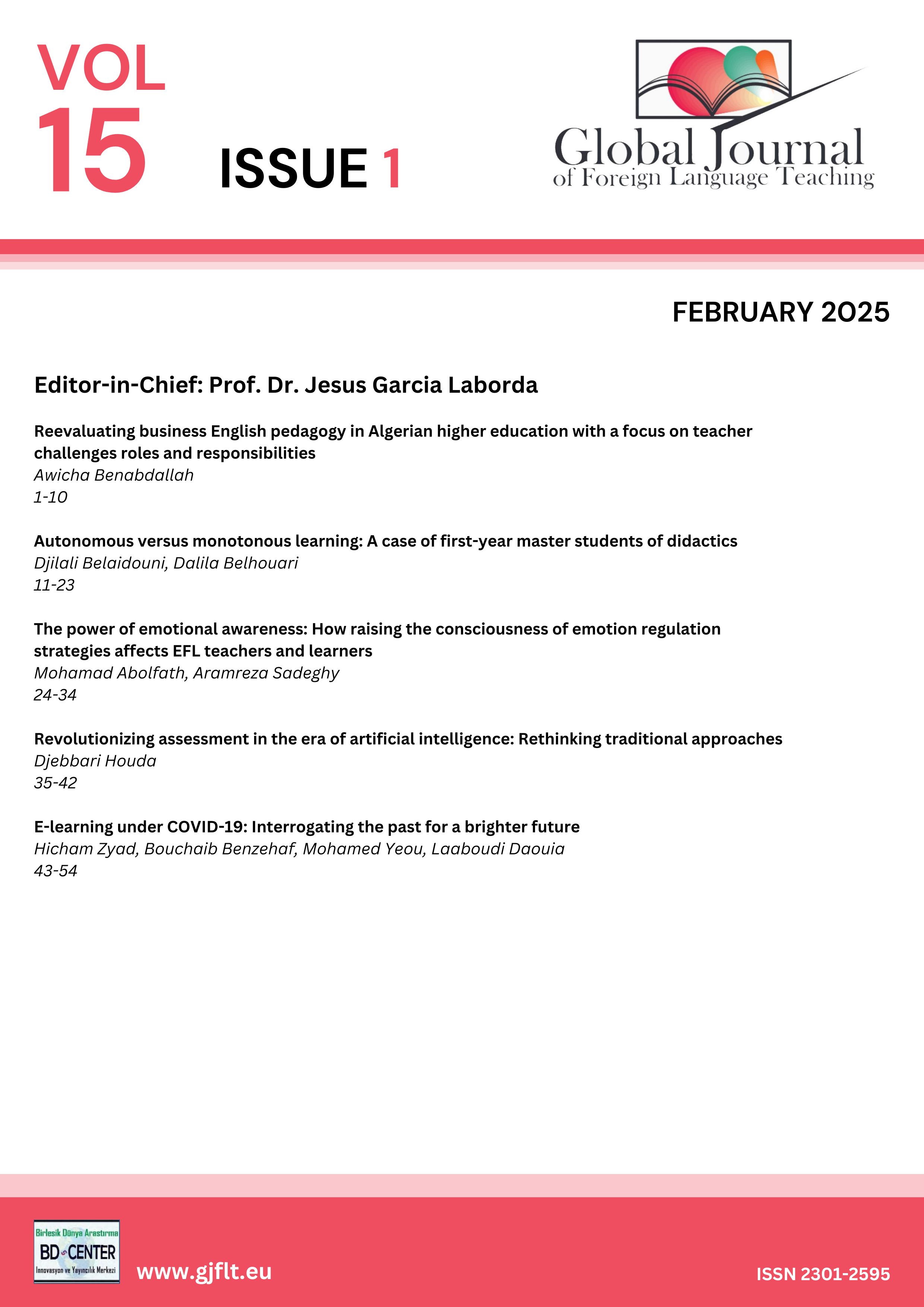Autonomous versus monotonous learning: A case of first-year master students of didactics
Main Article Content
Abstract
The Algerian educational system has seen various efforts to reform its structure, with a focus on promoting autonomy within the university setting. However, these attempts often result in a narrow approach to learning. This study, grounded in constructivist learning theory, addresses the persistent issue of the "Either… or" educational dilemma, where either the teacher or the learners dominate the classroom dynamic. This research aims to explore the need for balancing teacher-led presentations with opportunities for learners' independent thinking, fostering a reciprocal teaching/learning relationship. To achieve this, a mixed-methods approach was employed, utilizing both quantitative and qualitative data collection techniques. A questionnaire was administered to 150 first-year Master's students in Didactics at the Department of English, University of Ibn Khaldoun/Tiaret, followed by an interview with the instructor of the Didactics module to obtain more reliable insights. The findings reveal a significant imbalance between the teacher’s presentation and students’ opportunities for independent thinking. Based on these results, the study offers recommendations to enhance the classroom environment and promote a more balanced, interactive learning process.
Keywords: Amendment; didactic axis; educational setting; teachers’ presentation; learners’ free thinking; balance.
Downloads
Article Details

This work is licensed under a Creative Commons Attribution-NonCommercial-NoDerivatives 4.0 International License.
Authors who publish with this journal agree to the following terms:- Authors retain copyright and grant the journal right of first publication with the work simultaneously licensed under a Creative Commons Attribution License that allows others to share the work with an acknowledgement of the work's authorship and initial publication in this journal.
- Authors are able to enter into separate, additional contractual arrangements for the non-exclusive distribution of the journal's published version of the work (e.g., post it to an institutional repository or publish it in a book), with an acknowledgement of its initial publication in this journal.
- Authors are permitted and encouraged to post their work online (e.g., in institutional repositories or on their website) prior to and during the submission process, as it can lead to productive exchanges, as well as earlier and greater citation of published work (SeeThe Effect of Open Access).
